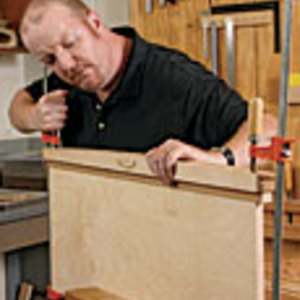What Can a Good Block Plane Do for You?
Learn about the different types of block planes on the market, plus tips on how to use them properly.A good block plane is perhaps one of the hand tools most commonly overlooked by hobbyist woodworkers. While many hobbyists associate the humble block plane with the easing of sharp edges normally carried out at the end of a furniture project, one that’s well-tuned can tackle much more than that.
What a Block Plane Can Do for You
Chamfers A good block plane will cut precise bevels on both long grain and end grain.
End grain A well-honed low-angle block plane can easily tackle end grain cuts, often encountered when flushing dovetail pins to a drawer side, or when flushing a rail to a stile on a door assembly.
Cornering A block plane should be able to level corner joints, where grain changes direction. Face frame construction is perhaps the most common example where block plane cornering comes into play.
Curved Edges Low-angle block planes excel at smoothing away the machine marks left by a bandsaw on curved cuts.
Easing Edges Perhaps the most common use for a block plane is the easing of sharp edges on furniture components, normally carried out right before finishing.
In this short video, Fine Woodworking senior editor Tom McKenna offers advice on block plane technique, as well as the various types of planes available on the market today. These tools are versatile enough to make them well worth the investment.
More from FineWoodworking.com:
- User’s Guide to Block Planes
- Video: Block Plane Tips and Techniques
- Do More with Your Block Plane
- Video: Fundamentals of Handplanes: the Block Plane
- Low-Angle Block Planes


















Log in or create an account to post a comment.
Sign up Log in